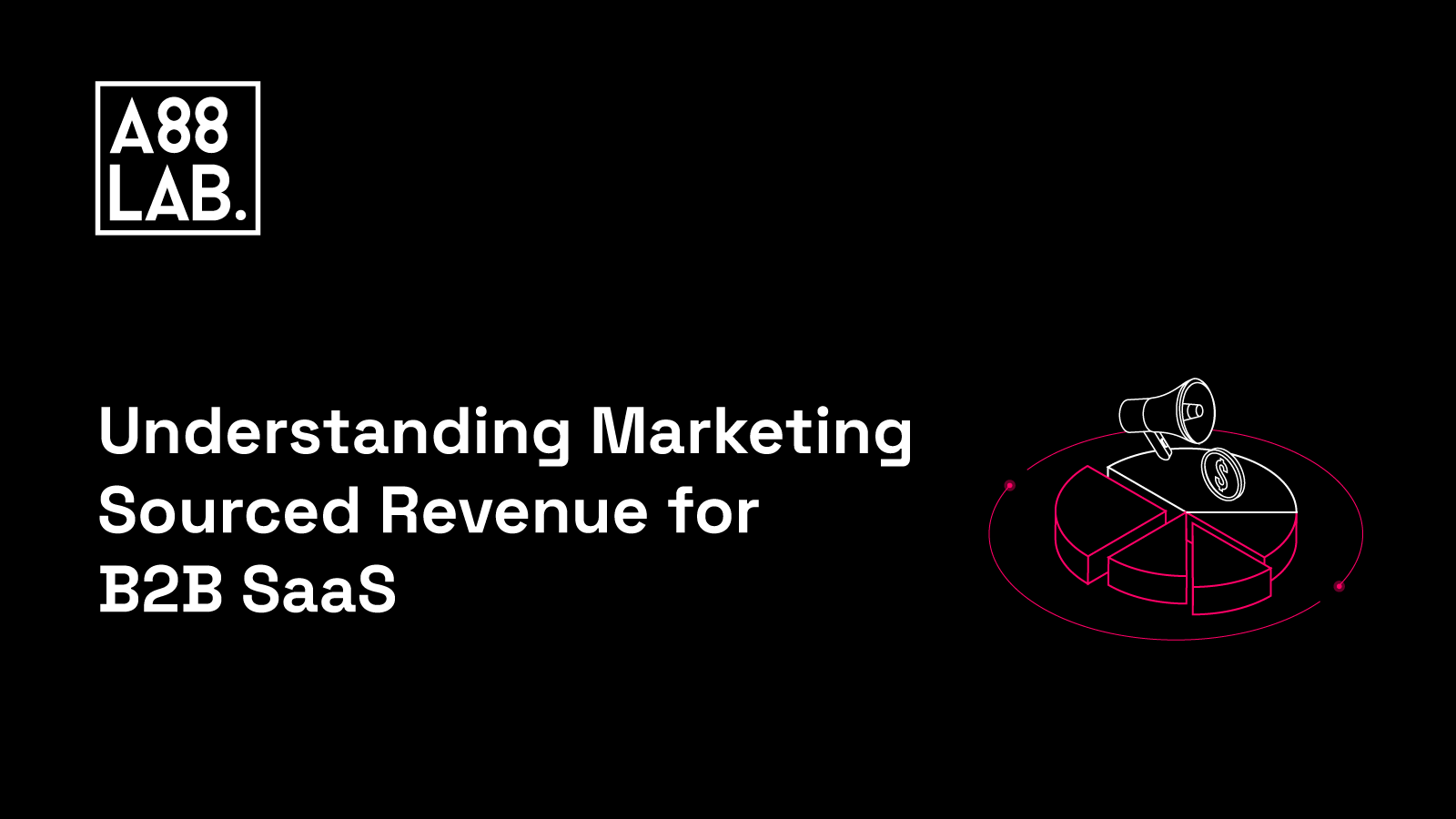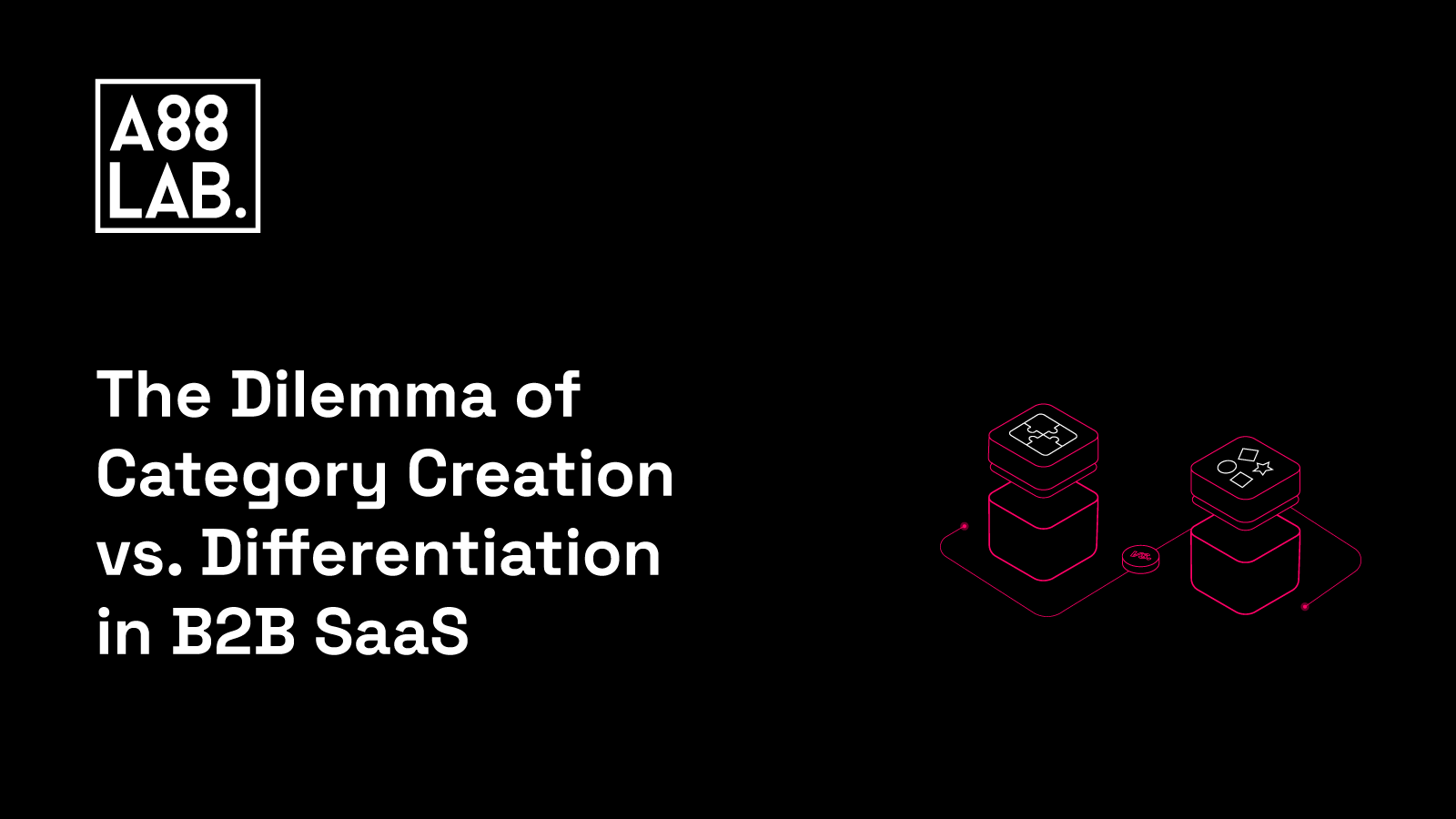Imagine being asked, "How much revenue has been generated through your marketing activities this year?" Now, let's clarify one thing: we're not talking about the number of contacts, sign-ups, leads, or MQLs you've produced.
We're asking if you can confidently demonstrate and attribute your marketing efforts to direct revenue generation. Chances are, you're left grappling for answers. And that's exactly the reason why marketing departments are considered cost centers or, worse, liabilities during times of downsizing.
CMOs and marketers need to adopt new approaches and ways of doing and measuring marketing. To advance in that direction it's important do understand the significance of marketing sourced revenue.
Marketing sourced revenue has become one of the core pillars for successful growth for B2B SaaS companies, as it reflects the direct impact of marketing efforts on the MRR and ARR.
What Is Marketing Sourced Revenue?
Marketing sourced revenue represents the direct financial impact generated by marketing activities within a B2B SaaS company.
It involves the revenue attributed to marketing-initiated efforts across the customer journey, from initial engagement to conversion and customer retention.
By focusing on marketing sourced revenue, B2B SaaS companies shift their attention to the ultimate outcome, aligning marketing strategies with revenue goals and amplifying the impact of their marketing efforts.
Differentiating Marketing Sourced Revenue From Other Revenue Streams
Marketing sourced revenue differs from other revenue streams, such as direct sales or referrals, as it specifically attributes revenue to marketing-initiated activities.
It highlights the role of marketing in driving customer acquisition, nurturing leads, and influencing purchase decisions.
By distinguishing marketing sourced revenue from other streams, companies gain a clearer understanding of the direct contribution of marketing efforts to overall revenue generation.
Marketing Sourced Revenue vs. Marketing Influenced Revenue
When analyzing the impact of marketing efforts on revenue, it is essential to distinguish between marketing influenced revenue and marketing sourced revenue.
Marketing influenced revenue refers to the revenue generated as a result of marketing activities, regardless of whether marketing was the direct source of the lead or sale. It recognizes the role that marketing plays in influencing customer decisions and driving revenue indirectly through brand awareness, thought leadership, and nurturing relationships.
On the other hand, marketing sourced revenue specifically attributes revenue to the initial marketing touchpoint that led to the conversion or sale. It provides a more granular understanding of the direct impact of marketing campaigns and initiatives on revenue generation.
Both are fundamental in evaluating marketing effectiveness, as they shed light on different aspects of marketing's contribution to overall revenue. By analyzing both marketing influenced revenue and marketing sourced revenue, B2B SaaS companies can gain comprehensive insights into the effectiveness and ROI of their marketing efforts, enabling them to make informed decisions and optimize strategies.
How to Measure Marketing Sourced Revenue
As mentioned in one of the chapters above, the first step to effectively measure marketing sourced revenue is to abandon the vanity metrics like contacts, leads, MQLS etc., and focus on bottom of the funnel metrics that also have a direct impact on sales cycles and the business itself.
-
Sales Accepted Opportunities (SAOs): SAOs reflect the number of opportunities identified and accepted by the sales team that originated from marketing efforts. It measures the quality and effectiveness of marketing-generated leads in progressing through the sales pipeline.
-
Pipeline velocity: Pipeline velocity assesses the speed at which leads move through the sales pipeline. By measuring the time it takes from initial contact to closing a deal, B2B SaaS companies can identify bottlenecks and optimize their marketing and sales processes to accelerate revenue generation.
-
Customer Acquisition Cost (CAC): CAC measures the cost of acquiring a new customer. By understanding the relationship between marketing expenses and revenue generated from newly acquired customers, companies can evaluate the efficiency and profitability of their marketing strategies.
-
Annual Recurring Revenue (ARR) and Monthly Recurring Revenue (MRR): ARR and MRR reflect the predictable and recurring revenue generated by a B2B SaaS company over a specified period. By monitoring these metrics, companies can assess the long-term value and sustainability of their customer base and identify opportunities for revenue growth.
The Impact of Marketing on Revenue Generation
In the past, marketing was often viewed as a support function, primarily responsible for lead generation and brand awareness. However, the modern landscape demands a mindset shift.
Marketing now plays a strategic and proactive role in driving revenue growth, customer acquisition, and overall business success. By leveraging data-driven insights, understanding the customer journey, and aligning marketing strategies with revenue goals, B2B SaaS companies can transform marketing from a cost center to a revenue driver.
Shift From a Cost Center to a Revenue Driver
To understand the real value of marketing sourced revenue, B2B SaaS companies must challenge the traditional perception of marketing as a cost center.
By aligning marketing strategies with revenue goals, optimizing demand generation and conversion rates, and adopting a customer-centric approach, marketing becomes a core for revenue growth.
This shift requires a strategic mindset, collaborative efforts, and a shared focus on driving measurable revenue outcomes.
Demonstrate Marketing’s Influence on Revenue
Measuring and showcasing marketing's influence on revenue is essential for gaining organizational buy-in and resource allocation. Its impact can be demonstrated by utilizing marketing automation platforms like HubSpot, CRM integration, and hybrid attribution models.
By attributing revenue to specific marketing activities, tracking customer interactions, and conducting in-depth data analysis, CMOs can establish a clear link between marketing efforts and revenue generation.
How to Increase Marketing Sourced Revenue
There are many things marketing teams can do to increase the marketing source revenue, and they can vary based on the internal departments, company culture, resources, priorities, etc. However, here are some examples:
Align Marketing Strategies With Sales Objectives
Effective collaboration between marketing and sales teams is essential to increase marketing sourced revenue. With open communication, sharing insights, and jointly setting revenue goals, both teams can align their efforts, optimize lead handoff processes, and drive revenue growth.
Marketing and sales must collaborate to define and refine target markets and ideal customer profiles (ICPs). This alignment ensures that marketing activities are precisely tailored to attract and engage the most valuable accounts and prospects, leading to higher conversion rates and increased marketing sourced revenue.
Shift From Lead Generation to Demand Generation
The shift from lead generation to demand generation represents a fundamental transformation in the marketing strategy. By embracing a holistic approach that includes demand creation and demand capture, SaaS companies can drive sustainable growth, improve lead quality, establish thought leadership,
The shift to demand generation is important for several reasons. Firstly, it aligns marketing efforts with the entire customer lifecycle, from initial awareness to post-sale engagement. This end-to-end approach ensures a seamless experience for prospects and customers, fostering trust, loyalty, and repeat business.
Demand Generation enables companies to establish themselves as an industry thought leaders and trusted advisors. By providing educational resources, thought-provoking ungated content, and valuable insights, B2B SaaS companies can position themselves as experts in their field. This authority helps build credibility, attract high-value prospects, improve bottom-line conversion rates, and accelerate sales.
Have a look at our comprehensive guide for Demand Generation.
Optimize Marketing Channels and Attribution Models
B2B SaaS companies should analyze the effectiveness of various marketing channels, such as content marketing, social media, email marketing, and paid advertising. By identifying the channels that drive the most revenue and optimizing their allocation of resources, companies can maximize marketing sourced revenue.
However this cannot be achieved solely by using a software attribution. A hybrid-attribution model, a combination of software attribution and self-reported attribution is much better approach. More about hybrid-attribution can be found in our article "From Broken to Effective: How a Hybrid Attribution Model Can Transform SaaS Demand Generation Strategies".
The customer journey in B2B SaaS is often complex and involves multiple touchpoints. Implementing advanced attribution models, such as hybrid-attribution, helps companies gain insights into the customer journey and attribute revenue to specific marketing channels or touchpoints. This understanding enables data-driven decision-making and optimization of marketing efforts to drive revenue growth effectively.
Develop a Customer-Centric Approach
Understanding customer pain points, aligning messaging with their needs, and delivering personalized experiences are crucial for driving marketing sourced revenue. By leveraging customer insights, conducting research, and continually refining ICPs, companies can create targeted marketing campaigns that resonate with their audience, driving higher engagement and conversion rates.
Produce Great Content and Become a Thought Leader
Content marketing and thought leadership are powerful drivers of marketing sourced revenue. By investing in high-quality, educational content that addresses customer challenges, B2B SaaS companies establish themselves as industry thought leaders. This builds brand authority, trust, and credibility, driving customer engagement, loyalty, and revenue growth.
Conclusion
In conclusion, optimizing marketing channels and attribution models are essential for B2B SaaS companies seeking sustainable growth and revenue generation. By evaluating the impact of marketing channels, understanding the customer journey, and implementing more sophisticated attribution models, organizations can unleash the true potential of their marketing efforts, and justify the direct impact of marketing on the revenue stream.
.png)


